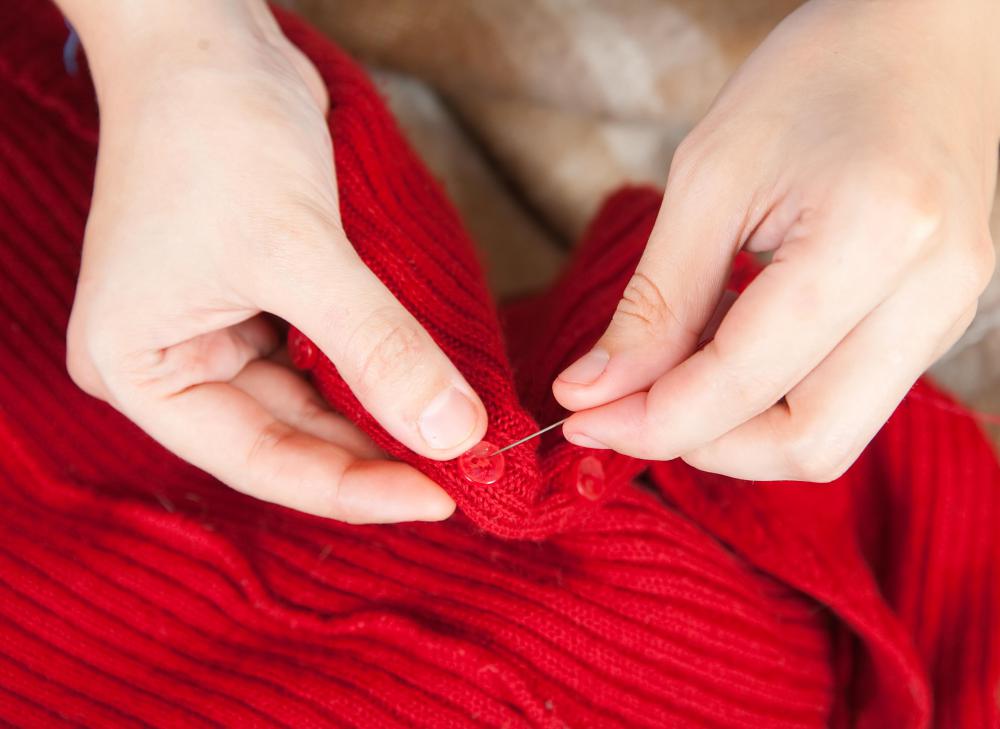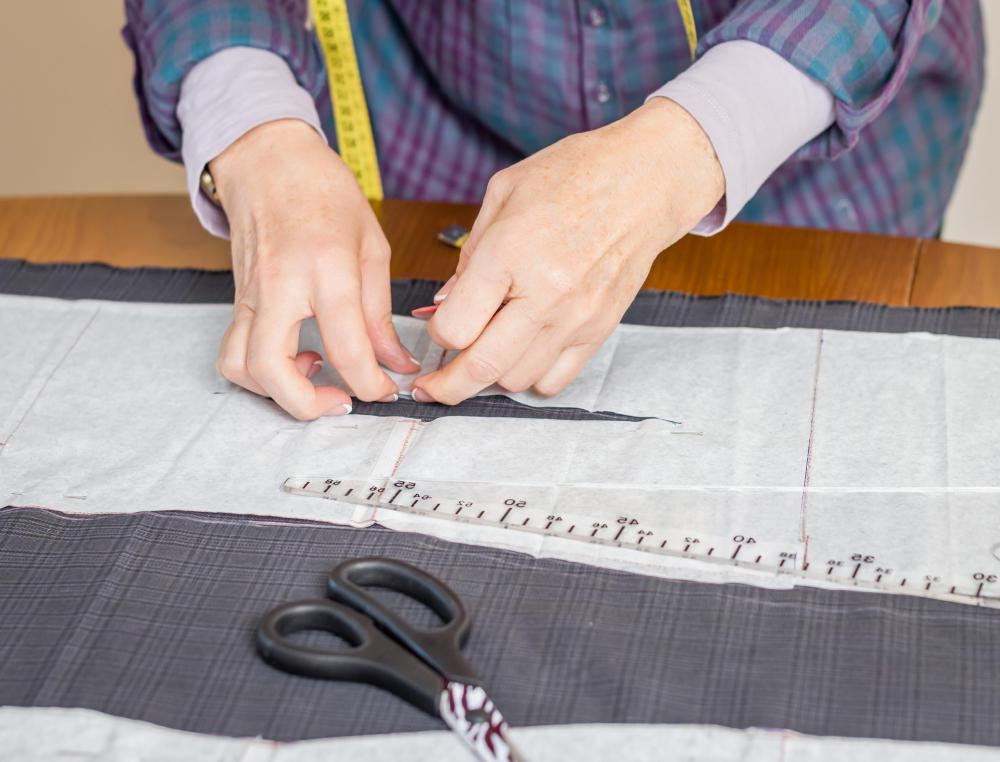At WiseGEEK, we're committed to delivering accurate, trustworthy information. Our expert-authored content is rigorously fact-checked and sourced from credible authorities. Discover how we uphold the highest standards in providing you with reliable knowledge.
What Are the Best Tips for Sewing Alterations?
There are many different types of sewing alterations, from a simple hem adjustment to the complex sports coat fitting. These tips will make the process more efficient and can help prevent costly errors and time consuming mistakes. All seams should be adjusted equally, patterns and material should be kept free of wrinkles, the grain-line of the fabric must kept straight, and the altered garment must be adequately fitted. Alterations can be made with a sewing machine or by hand.
Typically, sewing alterations are made at seam and dart lines. Most patterns include marked areas where adjustments can be made. Excess fabric is either folded in and restitched or cut out. If there is enough fabric in the seam, sometimes, a garment can be let out to a larger size. In most ready-made, mass marketed clothing, there is not enough fabric to let out. If alterations must be made to a garment, it is easier to resize a larger garment to a smaller size.

It is important to maintain the overall silhouette of the garment. Any changes that are made to a seam should be mirrored in other seams in the same area. For example, if a blouse needs to be adjusted at the waist, it should be adjusted in the side, front, and back seams as well. The total measurement of the adjustment should be divided between those seams. If a blouse is one inch (2.5 cm) too large, and it has four seams, each seam should be taken in 0.25 of an inch (6.5 mm).

The same technique is used when adjusting a pattern for a smaller size. The difference is that the amount to be removed is cut from the pattern on all seams. Making an adjustment for a larger size on a pattern uses the same method, except that additional fabric is added by redrawing the pattern at the appropriate seams.
When altering a pattern, the paper should be smooth and flat, with no bubbles or bunching. Sometimes it helps to iron a pattern on low heat to flatten it. A pattern that is wrinkled will typically result in an ill fitting garment. The same is true when working with fabric: it should be smooth and wrinkle free.
The grain-line of the fabric must be straight. When making an alteration, the grain-line should not be crooked or off center. This will affect the entire garment.
Special care must be taken when working with prints. The print should be matched up at the seams so that the garment does not have obvious seams. Also, cutting should be done in one direction, so that the print of the fabric is running right side up on all pattern pieces.
There are two ways to fit for sewing alterations. The first is to have the individual wear the garment and to mark the areas which need adjusting with pins or washable pencil. The adjustments are made directly to the garment, which is tried on again to ensure a proper fit. When using this method, it is important that the individual wear the undergarments he or she intends to wear with the garment. Undergarments can change the shape of the body, which should be reflected in the garment fitting.
Whenever the length of the garment is affected, the shoes that the individual intends to wear should also be taken into consideration. This is especially important for long gowns and pants. If the garment is hemmed for flat heeled shoes, it will be too short when it is worn with high heels. Alternatively, if the hem was made for high heeled shoes, it will be too long with flats.
The second way to fit for sewing alterations is to use comparable measurements. The wearer is measured and the garment is adjusted according to those measurements. Holding two fingers against the body while measuring helps allow the proper amount of easement to ensure a comfortable fit. Of course, this method is difficult to practice on oneself. Therefore, many professionals recommend measuring favorite clothes and using those measurements to make alterations.
AS FEATURED ON:
AS FEATURED ON:












Discuss this Article
Post your comments